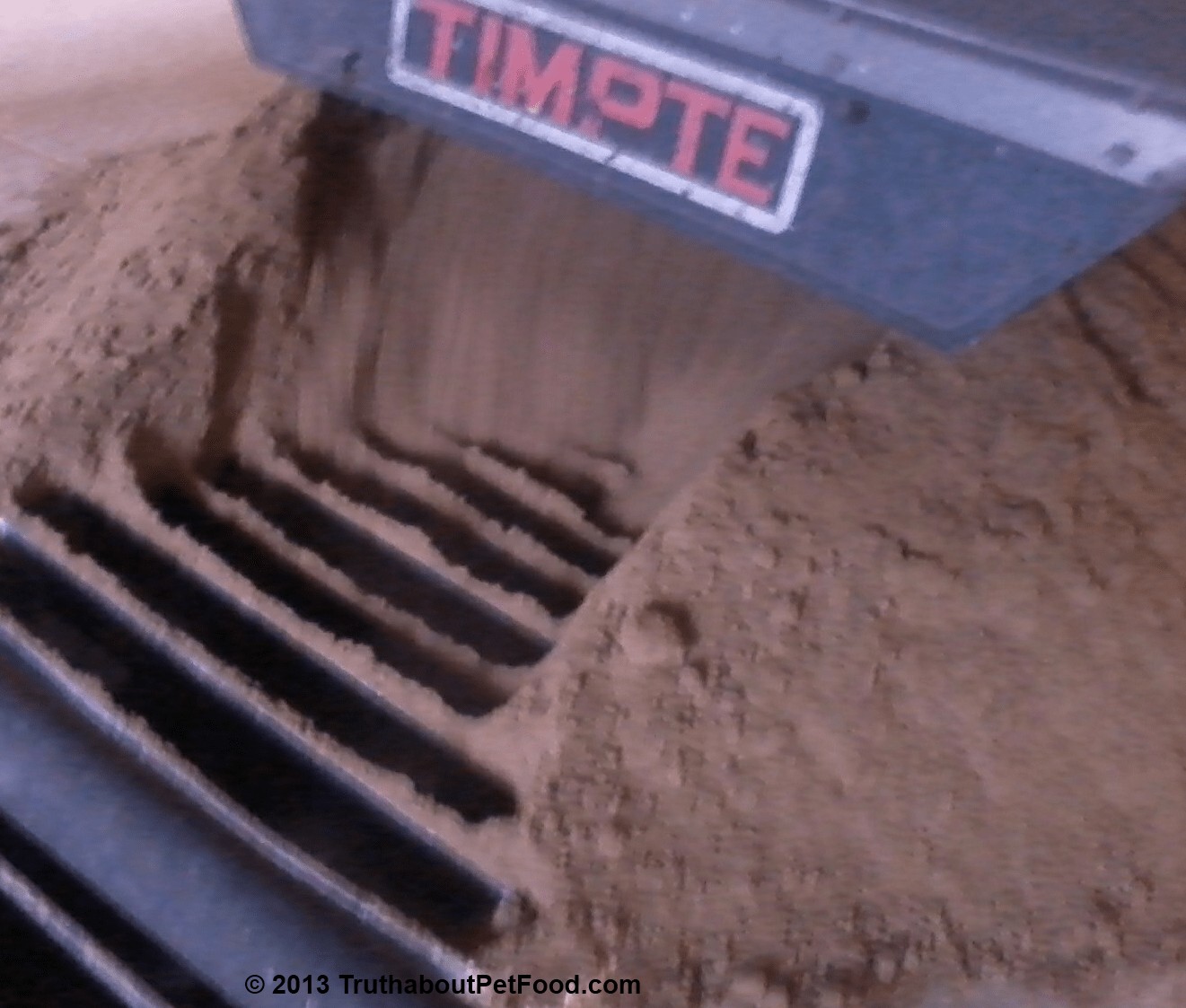“Beef meal” sounds nutritious and appealing for your canine companion, right? Many pet owners assume it’s simply ground beef. However, the reality of what constitutes “beef meal” in dog food is often far from that. This article delves into the specifics of beef meal, its production process, and what it truly means for your dog’s diet.
Decoding “Meat Meal”: More Than Meets the Eye
One of the biggest misconceptions is equating “beef meal” with the same quality of beef you’d find at the grocery store. The pet food industry uses its own unique terminology, and understanding it is crucial for making informed choices about your dog’s nutrition. Any animal protein ingredient in pet food that includes the word ‘meal’ is a rendered ingredient.
Rendering is a process that uses high temperature and pressure to convert animal carcasses or by-products into safe, nutritional, and economically valuable products. This process involves mixing, cooking, pressurizing, fat melting, water evaporation, and microbial and enzyme inactivation.
The rendering industry trade association illustrates the rendering process as follows: Raw material is ground, cooked, pressed to remove fat, and the remaining material is ground again into a ‘meal’ ingredient. This ‘meal’ ingredient typically takes the form of a powdery substance.
Why Use Beef Meal Instead of Fresh Beef?
Pet food manufacturers often opt for beef meal due to its cost-effectiveness and ease of handling. Meal ingredients can be transported and stored un-refrigerated, unlike fresh meat which requires freezing or refrigeration to prevent spoilage.
Meal ingredients are stored at a pet food plant in large bins.
Purina explains, “If we tried to use all chicken breasts for example, which are about 75% moisture, to make kibble, it would be way too watery and would not come out properly through the extrusion process.”
Unpacking the Components of Beef Meal
The rendering industry publication Waste Advantage Magazine clarifies the source of rendered materials:
“The majority of the waste material that is processed in rendering comes from slaughterhouses and can include fatty tissue, bones and other processing offal. Offal is the parts of an animal that are not fit for human consumption, such as organs, blood and feathers. Almost 30 percent of an animal’s live weight ends up as offal, which would be expensive to dispose of and wasted if not for the rendering process.“
Consider a slaughtered cow. After the prime cuts of meat are removed for human consumption, much of the remaining meat is mechanically separated and used in products like hot dogs and bologna.
This means that beef meal often contains very little actual muscle meat. It primarily consists of bones and internal organs not used for human consumption, such as the liver.
Types of Rendering Facilities: Integrated vs. Independent
A 2004 Congressional Research Service report, “Animal Rendering: Economics and Policy,” identifies two types of rendering facilities: “Integrated plants” and “Independent operations.”
Integrated rendering plants operate in conjunction with animal slaughter and meat processing plants. They process what is left over from the processing of animals for human food. These plants also render inedible byproducts (including slaughter floor waste) into fats and proteins for animal feeds and other ingredients. The material rendered from integrated rendering plants includes parts of animals that were either not consumed by humans or were rejected for use in human food.
While many pet foods claim their meal ingredients are “sourced from USDA inspected facilities,” this statement alone offers no guarantee of quality. The “waste” described above also originates from USDA inspected facilities.
Independent rendering facilities, on the other hand, collect material from various sources using specially designed trucks. This material includes fat and bone trimmings, inedible meat scraps, blood, feathers, and dead animals from meat and poultry slaughter houses, farms, ranches, feedlots, animal shelters, restaurants, butchers, and markets.
Here are some images of an independent rendering facility:
Making Informed Decisions About Beef Meal in Dog Food
The decision of whether or not to feed your pet food containing beef meal is ultimately a personal one. To make an informed choice, consider asking your pet food manufacturer the following questions:
- Is the meal sourced from an integrated rendering facility or an independent rendering facility?
- Are ingredients used to make the meal from 100% edible sources (USDA inspected and passed sources)?
- Can you guarantee that NO waste or inedible material is included in the meal?
- What is the percentage of muscle meat in the meal?
Advocating for Transparency in Pet Food
Efforts are underway to improve pet food ingredient definitions and provide greater clarity to pet owners. By asking questions and demanding transparency, pet owners can advocate for better quality and more informative labeling in the pet food industry. If you are trusting your pet’s life with their pet food, they SHOULD be more than willing to provide you with a written guarantee.
By understanding the truth behind “beef meal,” you can make more informed decisions about your dog’s diet and ensure they receive the nutrition they deserve.

